Take a look at our recent HOT Analytical Methods articles, these are now free to access for the next few weeks!
Historical textile dyeing with Genista tinctoria L.: a comprehensive study by UPLC-MS/MS analysis
Lore G. Troalen,Ashley S. Phillips, David A. Peggie, Perdita E. Barranac and Alison N. Hulme
Anal. Methods, 2014, 6, 8915-8923
DOI: 10.1039/C4AY01509F
Separation of Carbon Quantum Dots on a C18 Column by a binary gradient elution via HPLC
Yan Lu,Jun Wang,Hongyan Yuanb and Dan Xiao
Anal. Methods, 2014, 6, 8124-8128
DOI: 10.1039/C4AY01052C
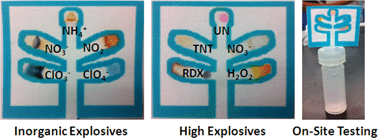
Simultaneous Colorimetric Detection of Improvised Explosive Compounds using Microfluidic Paper-Based Analytical Devices
Kelley L. Peters,Inge Corbin,Lindsay M. Kaufman,Kyle Zreibe,Lucas Blanesb and Bruce R. McCord
Anal. Methods, 2014, Advance Article
DOI: 10.1039/C4AY01677G
Microfluidic Devices for Label-Free and Non-Instrumented Quantitation of Unamplified Nucleic Acids by Flow Distance Measurement
Debolina Chatterjee, Danielle S. Mansfielda and Adam T. Woolley
Anal. Methods, 2014, 6, 8173-8179
DOI: 10.1039/C4AY01845A
The development of an autonomous sensing platform for the monitoring of ammonia in water using a simplified Berthelot method
Deirdre Cogan,John Cleary,Cormac Fay,Aoife Rickard,Kamil Jankowski,Thomas Phelan, Mark Bowkettb and Dermot Diamonda
Anal. Methods, 2014, 6, 7606-7614
DOI: 10.1039/C4AY01359J
Fatty acid profile reveals toxic response in adipose tissue of C57BL/6J mice exposed to 2,3,7,8-tetrachlorodibenzo-p-dioxin
Chuanqin Hu,Shuhai Lina and Zongwei Cai
Anal. Methods, 2014, 6, 8207-8211
DOI: 10.1039/C4AY01479K
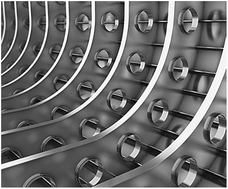
Direct determination of niobium at the low nanogram level in mineral waters and freshwaters
Montserrat Filella,David-Julien Magnenatb and Michaël Bensimonb
Anal. Methods, 2014, 6, 8090-8093
DOI: 10.1039/C4AY01860E
Paper-based electrochemical immunoassay for rapid, inexpensive cancer biomarker protein detection
C.K.Tang, A.Vazea and J.F.Rusling
Anal. Methods, 2014, 6, 8878-8881
DOI: 10.1039/C4AY01962H
Radioisotope-based XRF instrumentation for determination of lead in paint: an assessment of the current accuracy and reliability of portable analyzers used in New York State
Diana Guimarães,Tracie M. Cleaver,Steven F. Martin and Patrick J. Parsons
Anal. Methods, 2014, Advance Article
DOI: 10.1039/C4AY00819G
Development of combined salt and air assisted liquid-liquid microextraction as a novel sample preparation technique
Rouhollah Heydari and Sanaz Zarabi
Anal. Methods, 2014, 6, 8469-8475
DOI: 10.1039/C4AY01723D
Separation of Asparagine, Valine and Tetraethylammonium ions Overlapping in an Ion Mobility Spectrometer by clustering with Methanol introduced as a Modifier in the Buffer Gas
R. Fernandez-Maestre,C. Wu and H. H. Hill, Jr
Anal. Methods, 2014, Advance Article
DOI: 10.1039/C4AY01814A
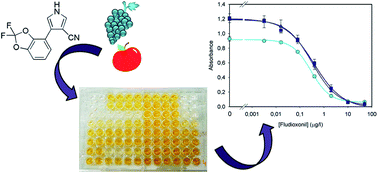
Development of a sensitive and specific enzyme-linked immunosorbent assay for the determination of fludioxonil residues in fruit juices
Josep V. Mercader,Antonio Abad-Fuentes, Consuelo Agulló, Antonio Abad-Somovill and Francesc A. Esteve-Turrillas
Anal. Methods, 2014, 6, 8924-8929
DOI: 10.1039/C4AY01756K
Induction of formation and conformational conversion of DNA G-quadruplex by fangchinoline
Wei Tan, Han Chen, Jiang Zhou, Ming Xub and Gu Yuan
Anal. Methods, 2014, 6, 8476-8481
DOI: 10.1039/C4AY01881H
Application of online microdialysis coupled with liquid chromatography–tandem mass spectrometry method in assessing neuroprotective effect of Coptidis Rhizoma on diabetic rats
Qianqian Wang, Jing Zhang, Zifeng Pi, Zhong Zheng, Junpeng Xing, Fengrui Song, Shu Liu and Zhiqiang Liu
Anal. Methods, 2014, Advance Article
DOI: 10.1039/C4AY01809E
Highly Sensitive and Portable Mercury (II) Ions Sensor by Using Personal Glucose Meter
Xu Xue-tao, Liang Kai-yi and Zeng Jia-ying
Anal. Methods, 2014, Advance Article
DOI: 10.1039/C4AY01502A














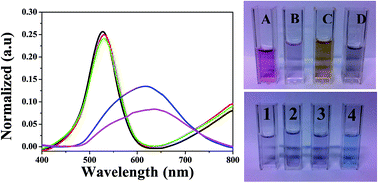
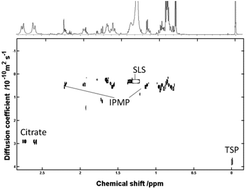 The application of high resolution diffusion NMR for the characterisation and quantification of small molecules in saliva/dentifrice slurries
The application of high resolution diffusion NMR for the characterisation and quantification of small molecules in saliva/dentifrice slurries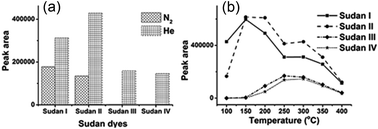

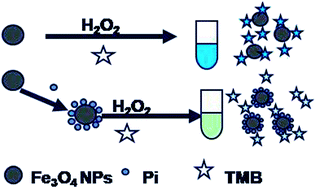






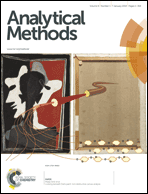 We are delighted to announce our highest Impact Factor* yet with 1.94!
We are delighted to announce our highest Impact Factor* yet with 1.94!
